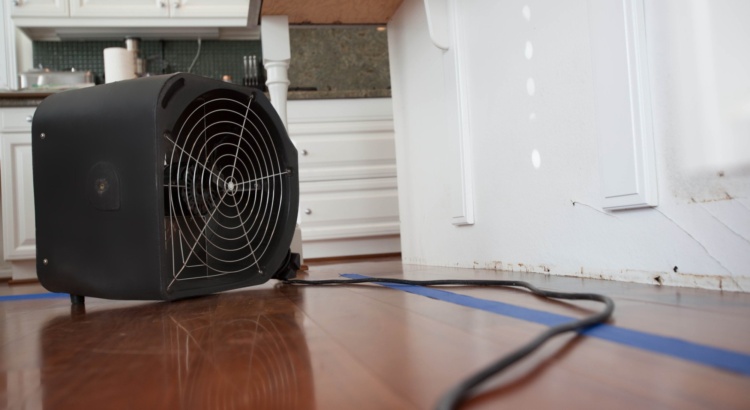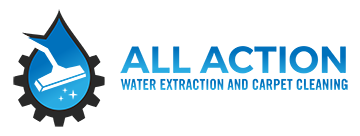What Is Water Restoration?

Every day, 14,000 people in the U.S. experience a water damage emergency at home. Imagine being part of that statistic after finding your basement flooded due to a burst pipe. Panic sets in as you realize your valuable possessions are in the water.
Not knowing about water restoration can lead to escalating costs and prolonged damages. The benefits of water restoration help preserve property value and ensure safety. Keep reading to learn more about this crucial service and how it can safeguard your home.
Define Restoration
Water restoration refers to restoring an area affected by water damage. This process ensures that the property returns to its previous, undamaged state.
People use the terms water restoration and water remediation in an interchangeable way. While similar, restoration involves returning the property to its original condition. It occurs after water removal and the drying process.
Causes of Water Damage
Water damage can stem from various sources. Common causes include:
- Leaking roofs
- Broken pipes
- Malfunctioning appliances
- Severe weather conditions
Natural disasters like hurricanes and floods can also wreak havoc. It necessitates immediate water restoration services. You can call us for emergency advice after a weather havoc.
Recognizing the cause of water damage is crucial. By identifying the source, property owners can take quick action. This swift remediation can help reduce the extent of the damage and the costs.
The Water Restoration Process
What is water restoration? It refers to a series of steps that start with a thorough damage assessment. Then, specialized equipment helps remove the water.
After that, the professionals will dry and dehumidify the area. Post-drying, cleaning, and sanitizing ensure the affected area is free from harmful agents. The last part entails small or large renovations, depending on the severity.
Equipment Used in Water Restoration
Restoring water-damaged properties requires a range of specialized equipment. Water extractors, dehumidifiers, and air movers help remove excess moisture. Infrared cameras detect hidden water sources, while hygrometers check humidity levels.
Using the right tools ensures a thorough and efficient restoration process. It minimizes risks and ensures safety for both the residents and the technicians.
Timing in Water Restoration
Prompt action is of the essence in water restoration. The longer water sits, the more damage it can cause. Within hours, water can seep into walls, floors, and belongings.
It makes the damage more extensive and the restoration more costly. A delayed response can also lead to the growth of mold and bacteria. These organisms pose health risks to occupants and further complications.
Why Choose Water Restoration Services?
You may feel the urge to handle minor water problems on your own. Professional water restoration services offer expertise and resources that can be valuable. They can manage various damage degrees, addressing all the issues.
Professionals also have access to advanced equipment that facilitates a more thorough job. These benefits guarantee a faster return to normalcy. It also prevents potential problems, like mold growth, from happening.
Understanding Water Restoration Expenses
The costs to restore water-damaged properties can vary. Factors influencing the price include:
- The damage extent
- The affected property's size
- The restoration's complexity
It's also important to consider the potential costs of not opting for an expert. An example of this would be low property value and health hazards.
Insurance often covers water damage. Review your policy to learn the extent of the coverage. Early communication with insurance companies can help streamline the restoration process.
Mold and Structural Issues
Immediate water damage is a primary concern. Secondary ones, like mold growth and structural damage, also need attention. Mold can thrive in damp environments, posing health risks and further damaging property.
Structural damage may compromise the building's safety. Thus, a water restoration service will address these secondary issues.
Environmental Considerations
Beyond property concerns, water restoration also involves understanding environmental implications. Water conservation is vital, especially in areas prone to drought. Professionals in the field often adopt techniques that reduce water wastage during restoration.
Moreover, restoring water systems in wetlands and aquifers ensures sustainability and ecological balance. This process emphasizes the interplay between built environments and natural ecosystems.
Reducing the Risk of Water Damage
While water restoration services are valuable post-damage, preventive measures can mitigate potential issues. Reduce risk with regular property maintenance, like:
- Checking for leaks
- Ensuring proper drainage
- Installing sump pumps
Remember to watch the weather report on TV. Weather awareness allows property owners to take proactive measures. This prompt action ensures the property remains safe and secure.
DIY vs. Professional Water Restoration
The DIY approach is appealing, especially for minor water damage. The intricate process of restoring water-affected areas demands comprehensive knowledge. Missed spots, inadequate drying, or improper cleaning can lead to long-term problems.
Professional services guarantee a thorough job, addressing both immediate and potential issues. The choice hinges on the damage's extent and the property owner's expertise.
The Evolution of Water Restoration
Over the years, the field of water restoration has seen significant advancements. Modern equipment allows for faster and more efficient water removal and drying. Innovations in monitoring tools identify hidden moisture spots.
Furthermore, the industry's growth has spurred the development of various certification programs. These programs ensure technicians are well-trained, keeping pace with the evolving techniques.
Green Approaches in Water Restoration
The push for environmental solutions has reached the water restoration industry. Many professionals now use "green" techniques to restore properties without hurting the environment. This approach includes:
- Using eco-cleaning agents
- Conserving water during the restoration process
- Recycling materials when possible
Technological advancements have made it possible to use energy-efficient equipment. It helps reduce the carbon footprint of restoration projects. Property owners can now contribute to a healthier planet while restoring their properties.
Navigating Legal Aspects
Different regions may have specific building codes, environmental guidelines, and permits. Be aware of local regulations to ensure that restoration efforts maintain compliance. Professional restoration services often assist clients in navigating these requirements.
The Importance of Water Restoration
Water restoration isn't only about cleaning up after a flood or fixing a leak. It's about safeguarding your home or business. Addressing water damage ensures property preservation and its occupants' health and safety.
If you are facing water-related issues, don't leave it to chance. Check out All Action's Water Restoration Service and secure peace of mind for your space.
